Iran seems to perpetually find itself in a state of resistance, whether in confronting the devastating economic impacts of the “maximum pressure” campaign of US sanctions imposed by President Donald Trump’s administration, engaging in proxy wars and the tit-for-tat brinkmanship of low-intensity warfare throughout the region, maintaining an ongoing rivalry with Saudi Arabia or managing the infiltration of sensitive domestic sites by opposing actors. As the events surrounding the US assassination of Maj. Gen. Qassem Soleimani—commander of Iran’s Islamic Revolutionary Guard Corps’ elite Quds Force—in January 2020 demonstrates, the threat of an escalating conflict between Iran and the United States remains an ongoing concern.[2] The prospect of war continues to hang over the country.
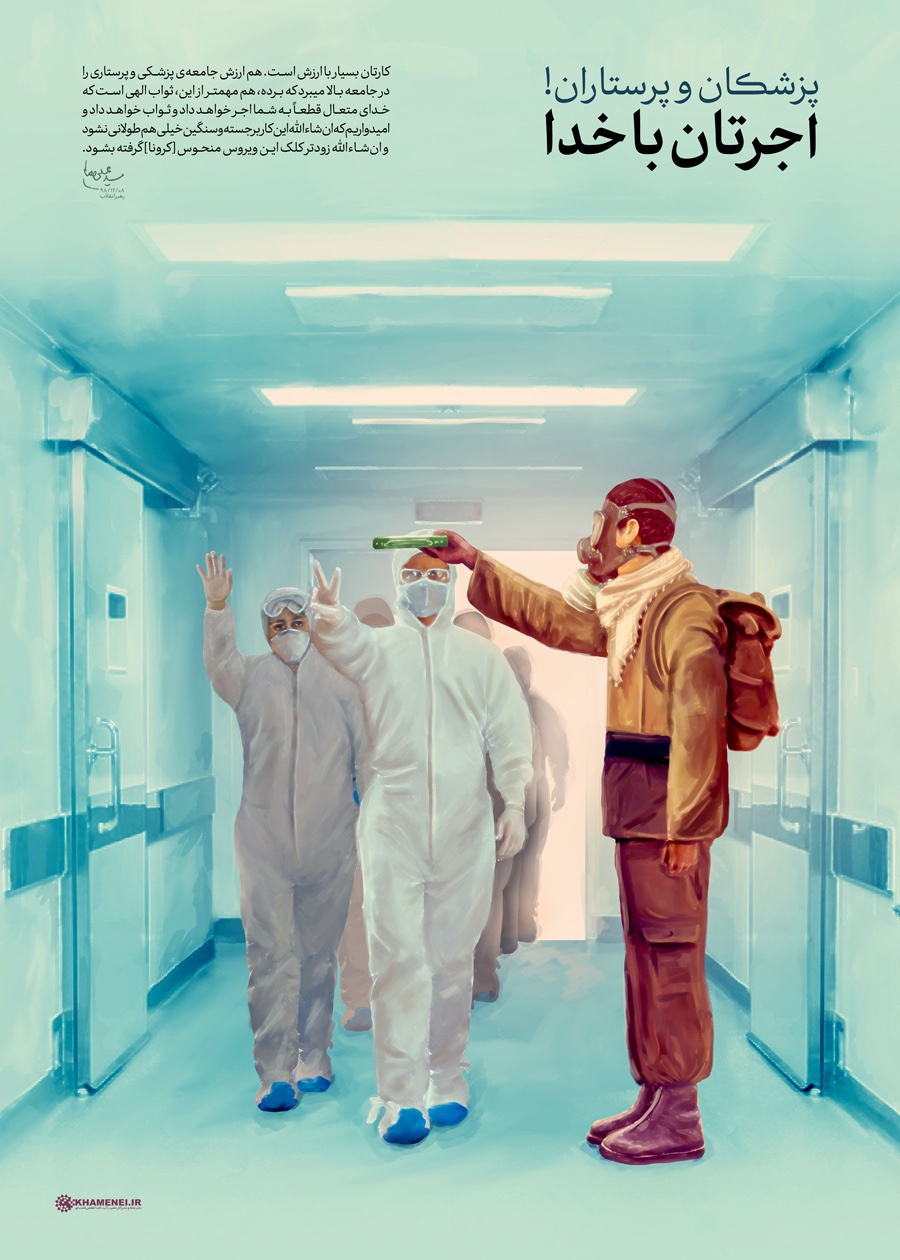
Fig. 1. “Doctors and Nurses! Your reward is with God.” Source: Office of Supreme Leader.
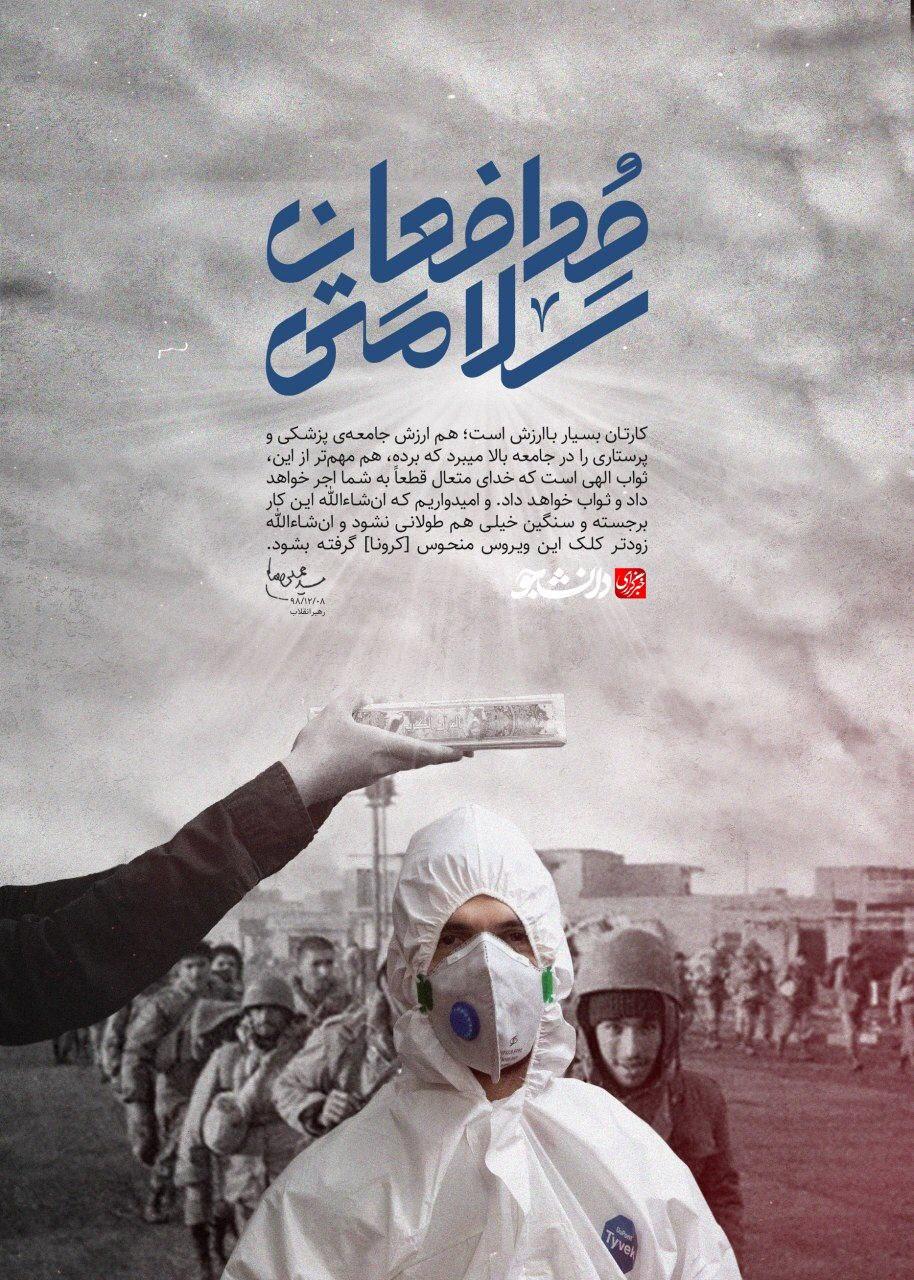
Fig. 1. “Health Defenders.” Source: Student News Network.
The regime in Iran has taken the opportunity provided by this political environment to connect the current coronavirus pandemic to the memories and experiences of past national traumas in the hopes of positioning all these crises on a single ideological arc that spans the lifetime of the Islamic Republic, right up to the present. This ideological work is manifested particularly in the transposition of iconographic motifs from the time of the Iran-Iraq War (1980–1988) to the current pandemic, such as passing under the Quran, an act that in state propaganda is inextricably associated with marching to the war front. [Fig. 1] Healthcare professionals are depicted taking part in this wartime ritual through photoshopped images placing them on the front lines or alongside a soldier administering the act in a present-day hospital corridor. Time and space are collapsed in such a way as to connect the participants of multiple national crises with one another and create a singular narrative of national resistance.
Slogans, music videos and other forms of media are also being used to make connections between the coronavirus and previous moments of crisis. All of these efforts reveal an ongoing feature of the Islamic Republic’s ideological program: the presentation of life in the Islamic Republic as a continual act of resistance that requires unity in the face of new crises and threats.
Framing a Current Crisis Through Reference to the Past
Efforts to perpetuate the image of a nation in crisis, under threat and in need of unified resistance can be seen in the increasing number of connections being made between the current public health crisis and the Iran-Iraq War and, to a lesser extent, Iran’s battle against the Islamic State in Iraq and Syria (ISIS) and military involvement in Syria. For starters, the name given to those involved in the operation to fight the coronavirus, the “Health Defenders” (modafeʻan-e salamat), immediately conjures the names of protagonists associated with earlier moments of crisis: the “Sacred Defense” (defaʻ-e moqaddas) during the war with Iraq and the “Shrine Defenders” (modafeʻan-e haram) in Iran’s continued involvement in the war in Syria.
Any observer with a broad familiarity with these nationally designated operations will recognize that they bear little resemblance to one another on the surface. Despite the resonance of the moniker Sacred Defense in later struggles, each operation represents a strikingly different level and type of threat to Iranian state and society. One was an eight-year war that began with an attack on Iranian territory and during which territory and sovereignty were continually threatened and put at risk. Another refers to supporting the rule of Syrian President Bashar al-Asad and protecting Shiʻi shrines and people in Iraq and Syria from ISIS, which unlike the war with Iraq is an operation mainly carried out by non-Iranians and outside of Iranian territory. The third relates to a public health crisis stemming from the non-human threat of an invisible enemy, which makes no distinction between soldiers and civilians, but does appear to disproportionately impact the more impoverished members of society. These three threats are as distinct with regard to their cost to human life as they are different in the theaters of operation.[3] But it is precisely due to the vast differences between these crises that the government’s desire to project some semblance of commonality, and along with it, ideological consistency, reveals itself all the more.
Across Iran’s media landscape a host of posters and collages have emerged to appeal to the sense of national mission and sacrifice that connects the soldiers of the Sacred Defense with the Health Defenders. Such visual iconography has been created and distributed by a variety of outlets, from the Office of the Supreme Leader and regime-allied media, such as Fars News, to parastatal organizations and individual graphic designers. In commemoration of Martyrs’ Day, for example, the Navid Shahed Organization of Gilan displayed ten posters that blended photographs of soldiers from the war with those of doctors and nurses battling the coronavirus. Under the headline “The Sacrifice Continues,” the posters creatively spliced together images to highlight the similarities in behavior and action among those doing battle on the war and medical fronts. [Fig. 2]

Fig. 2. “The Sacrifice Continues.” Source: Navid Shahed Gilan.
Generally speaking, the iconography of the Iran-Iraq War and the coronavirus crisis mesh well: medical personnel wearing surgical masks harkens back to the images of soldiers wearing masks as protection from Iraqi chemical attacks and the donning of specialized uniforms. Slogans and images will often recirculate in new formats and contexts, across social media and elsewhere, as happened with a “National Heroes” poster first appearing in Fars News but later made into a national postage stamp, unbeknownst to the designer. [Fig. 3]
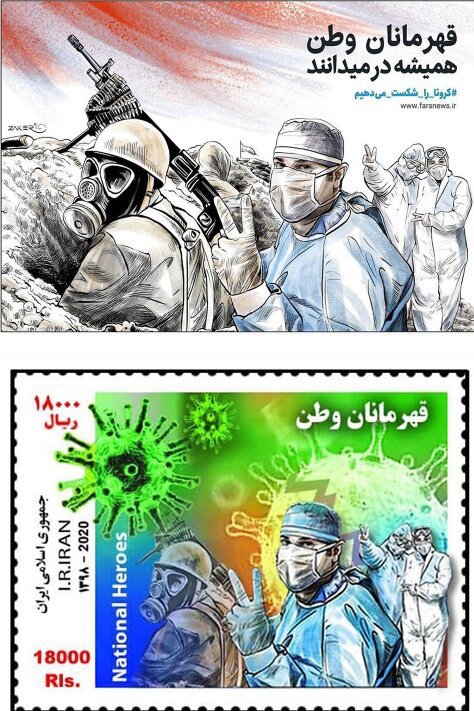
Fig. 3. “The Nation’s heroes are always in the field,” original design and postage stamp. Source: Tehran Times.
Through the use of slogans, posters and archival photographs, government actors and affiliates—as well as their allies in the media—have sought to draw multiple obvious connections between the current coronavirus crisis and the brutal eight-year war with Iraq in order to mobilize society, promote unity and engender individual sacrifice. What is made clear, above all else, are the personal sacrifices in the face of the virus, often framed and narrated in martyrdom discourses linked to wartime Iran. The first so-called martyr of health in Qom province was a hospital worker who was also a veteran of the Sacred Defense and a victim of a chemical attack during the war. The obituary noted that he “has always been on the front lines of providing service to the people of Iran.” Doctors, nurses and volunteers who have lost their lives to the pandemic are also being called—with the blessing of Supreme Leader Ali Khamenei—”Martyrs in Service,” a nod to the pantheon of past martyrs that have died defending the homeland.[4] The rhetoric and iconography used to convey the Islamic Republic’s confrontation with the coronavirus is embedded in the martial language of sacrifice and mobilization, which provides a direct link to the Iran-Iraq War. Other governments have used the metaphor and language of war to depict their fight against the coronavirus but few, if any, have sought to relate it to an actual war in the country’s immediate past. The battle against the coronavirus is not simply being presented as a war, but as the Iran-Iraq War in particular. The struggle against the coronavirus may be new, but it is part of an ongoing story.
Struggles Across Space and Time
The militarized rhetoric framing the government’s response to the coronavirus pandemic is directly connected to a political environment that features the ongoing threat and possibility of war. Rivalry and proxy wars with Saudi Arabia and the United States, targeted assassinations, cyber warfare, economic pressure and more recently a series of explosions in military and industrial facilities highlight a tense domestic and regional environment. These developments contribute to a sophisticated discourse of war to which everyday Iranians have become accustomed. Providing the coronavirus crisis with a martial framing is an expected outcome in this regard: It recognizes an ongoing reality about current political life in Iran and the potential need to mobilize the whole of society in readiness for war.
The transposition of the Iran-Iraq War to the pandemic, however, pushes the discourse of crisis and mobilization far beyond what is needed for dealing with the difficult circumstances of an unknown disease. The idea that a particular struggle can transcend space and time and ultimately be perceived as part of the same conflict as previous ones is not new. Rather, it is a key construction within the Islamic Republic’s ideology. For example, during the Iran-Iraq War the conflict was framed not as new but as the Battle of Karbala that took place in 680 CE and which provides the genesis narrative for the Shiʻi denomination. The Battle of Karbala, according to Shiʻi tradition, is where the grandson of the Prophet Mohammad, Husayn ibn Ali, and his followers were collectively martyred while opposing the tyranny, injustice and disbelief of the caliph Yazid and his superior army. The event serves as a central historical and spiritual wellspring from which Shiʻi collective identities are drawn. Against this background, the war with neighboring Iraq was cast as a continuation of this struggle. Iran represented itself in the conflict as the faction fighting on the path of the Prophet and his martyred grandson, whereas Saddam Hussein, the Iraqi Baath government and the imperialist powers of the West were marked as the forces of disbelief, immorality and tyranny. The term used to designate the war, Sacred Defense, not only refers to the actual defense needed to protect the country’s sovereignty, but also to the resistance of a true Islam against the forces of disbelief, a perspective deeply rooted in the history of the Shiʻi community’s minority status.
It is little wonder that allusions to the Sacred Defense have continued to proliferate long after the war’s end. The war not only represents a critical moment in the history of the Islamic Republic, but also one already imbued with the narrative of Karbala, making it the latest recognizable moment on a transhistorical continuum of resistance. This conceptual lineage makes the war an easy reference point for a variety of contexts, even those disconnected from war itself. In 2012, when the country was under severe economic pressure due to international sanctions, government affiliates applied the prominent wartime slogan, “War, war until victory” to the labor sector to promote the ongoing campaign of “economic resistance.” Refashioned as “War, work until victory” the slogan resonated with the past struggles of the war and was paired with images that merged photographs of contemporary workers with soldiers of the Sacred Defense. [Fig. 4] Owj Media, an affiliate of the Islamic Revolutionary Guard Corps, placed the posters on billboards in 100 locations across Tehran. At least one poster later appeared in promotional materials for the Iranian automaker SAIPA, demonstrating once again how these posters and slogans can be co-opted into new contexts. The language and imagery of resistance and struggle are not simply confined to the domain of government propaganda but are able to cross into new modes of programming, in this case private industry, largely because the nature of Iran’s precarious position within the international system is so widely understood and recognized across society. In other words, government sponsored messaging of this kind is capable of being reimagined, redeployed and redistributed by different domestic actors precisely because it is grounded in reality.
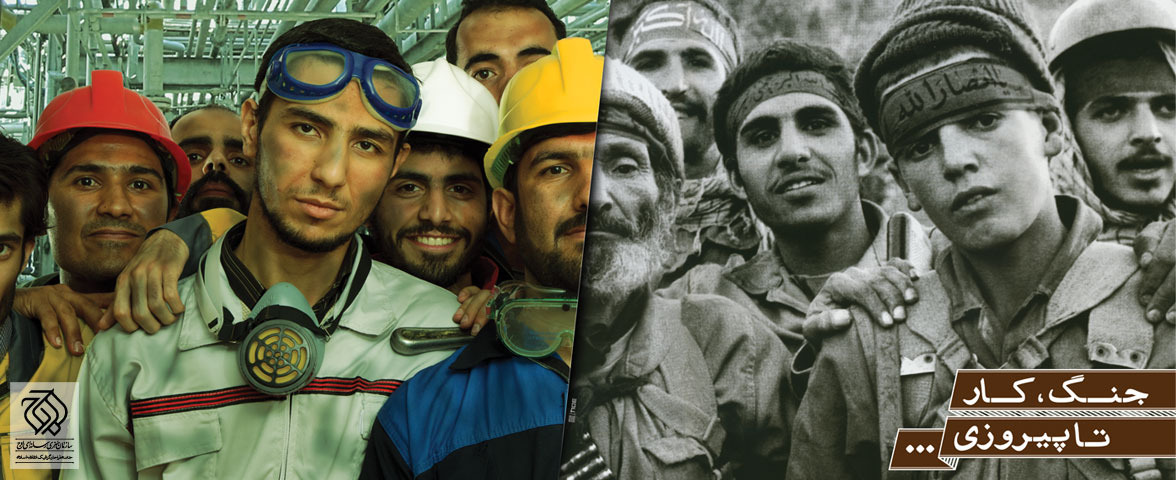
Fig. 4. “War, work until victory.” Source: Yanon Design.
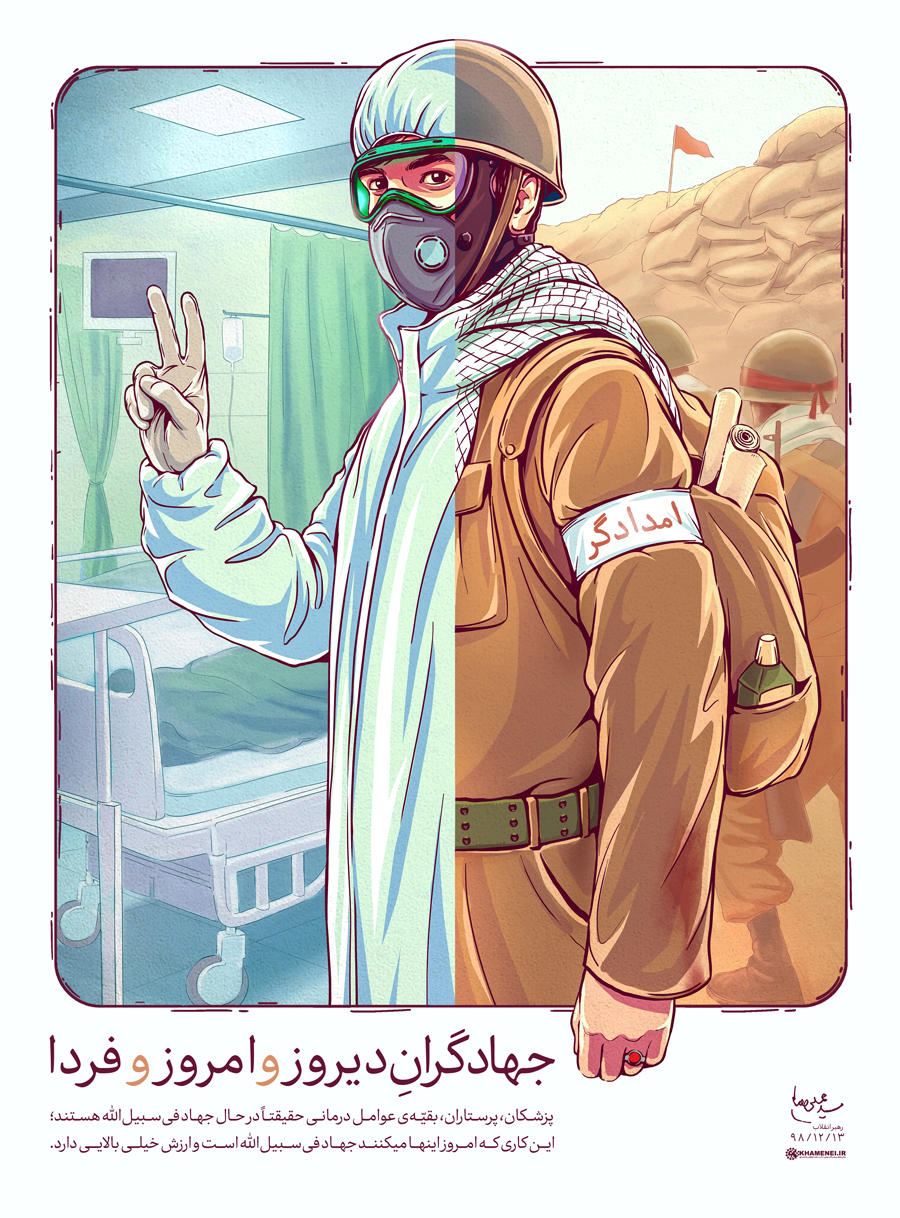
Fig. 5. A war medic and health care professional collapsed into one figure. The slogan reads, “The holy warriors of yesterday, today, and tomorrow.” Source: Office of Supreme Leader
Two posters in honor of the Health Defenders released by the public relations office of the Governorate of Dezful demonstrate the sophistication of the approach. [Fig. 6] Dezful is a city near Iran’s border with Iraq and witness to some of the war’s most critical moments. As a strategically important town, Dezful was hit by countless rocket attacks during the war. Iraqi troops, however, never succeeded in capturing it. The town itself and its inhabitants became symbols of resistance against the external enemy. The posters draw upon this symbolic power of Dezful as an icon of resistance. Against the backdrop of different wartime photographs of the city, each poster depicts a present-day health worker having their face mask secured by someone else.

Fig. 6. Source: Public Relations Office of Dezful Governorate.

Fig. 6. “The trench is the same trench, the people are the same people.”
But these are not just any individuals helping out their fellow citizens, they are parents of so-called martyrs from Iran’s past: a mother whose son died during the war and a father who lost his son to a terrorist attack on a military parade in Ahvaz in 2018. The securing of the face mask is an unmistakable reference to the wartime practice of tying a bandana around one’s head before leaving for the front. It signals the willingness of the volunteer to seek martyrdom in battle. In other Health Defender posters, the connection between the tying of bandanas and face masks is even more explicit. The mask, just like the bandana before it, is a symbol of sacrifice in defense of the nation, an act further sanctioned in this case by a parent who has already lost a child to the same fate. The sacrifice of today appears undoubtedly connected to that of yesterday, or as the slogan on the posters puts it: “The trench is the same trench, the people are the same people.”
The slogan and posters depicting the Health Defenders collapse space and time in such a way as to present life in the Islamic Republic as one of continued crisis and permanent resistance. But the task of fulfilling the necessities of the present while living up to the expectations of the past is challenging. It is not only the memory and imagery of previous crises that project themselves into the present but the participants of these earlier struggles too.
In a Health Defender poster published by the Office of the Supreme Leader, the iconic documentarian of the Iran-Iraq War, Seyyed Morteza Avini, looks through his camera to the battle of the present day as if he is documenting contemporary health care workers who are seen reflected in the lens. [Fig. 7]
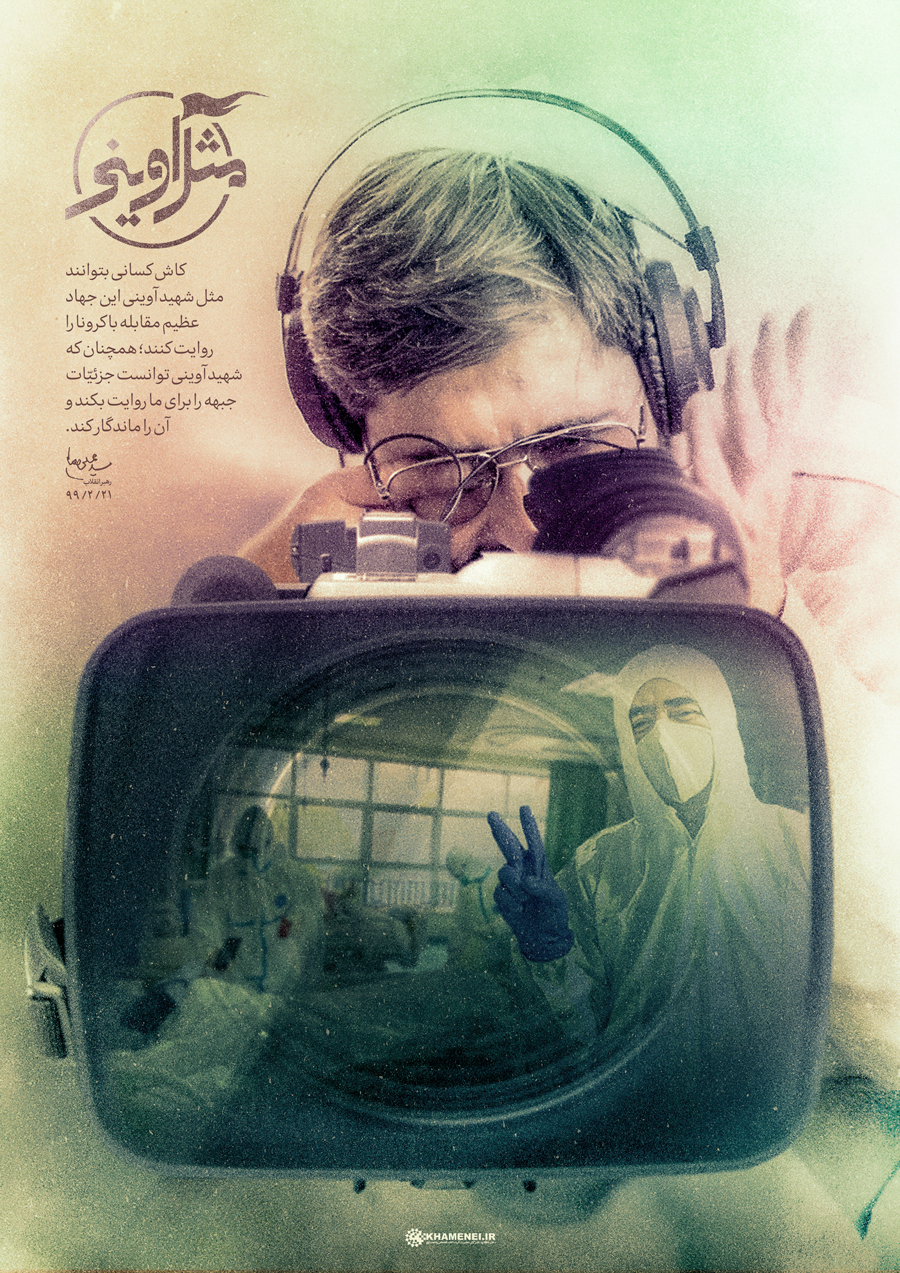
Fig. 7. “Like Avini.” Source: Office of Supreme Leader.
Avini, who was killed in a landmine explosion after the war in 1993 and has been venerated ever since as a martyr, reported from the front lines of the war week after week. In his series “Chronicles of Victory” (Ravayat-e fath), he took less interest in the course of the war than in the lives and suffering of ordinary soldiers. He even brought attention to the practice of passing under the Quran on the way to the war front, the same gesture now being replicated in posters of the Health Defenders. Appearing here, as a filmmaker and martyr, he is both chronicler and symbol of the Islamic Republic’s past struggles. Looking through the camera lens, he reports from the trenches of the past to observe and document the present—not so much to impose the past upon the present but to show that a gateway exists between the two. The struggle is the same struggle. The trench is the same trench. The dissolution of the barriers of time and space in presenting the war against the pandemic appears complete.
Supreme Leader Khamenei is quoted on the poster lamenting that there is no one today like Avini who can record and narrate the great struggle against the coronavirus. The key question is, however, not who is looking through the camera, but what is being seen by those looking back from the other side. To what extent those living in Iran today choose to accept the portrayal of the current health crisis as part of a continuum of resistance and sacrifice is unclear. But connecting different moments of national sacrifice across the 40 year history of the Islamic Republic is not simply the sole domain of the regime. As one woman from the city of Yazd, who converted her home to a workshop for making masks, put it: “Iran and the Islamic Revolution are the product of martyrs’ blood from the eight-year Sacred Defense and the sacrifice of today’s Shrine Defenders. We will do our best to preserve and defend this valuable heritage.” To find inspiration in the unifying aspects of national suffering is a remarkably human characteristic, made all the more understandable for those living in a country beset by war and sanctions and made to feel under siege during the last four decades. It is in fact this decades-long resilience in the face of such suffering that the regime continues to lean on, particularly in instances such as the current public health crisis, when its perceived competence and legitimacy may be most at risk.
[Kevin L. Schwartz is a research fellow at the Oriental Institute of the Czech Academy of Sciences in Prague, Czech Republic. Olmo Gölz is a research fellow in Islamic and Iranian Studies at the department for Oriental Studies, University of Freiburg, Germany.]
Endnotes
[1] By the end of August 2020, the number of coronavirus related deaths in Iran was approximately 21,000. For updated figures see Worldometer.
[2] Kevin L. Schwartz, “War with Iran: The Pretext of Proxies,” LobeLog, March 22, 2019.
[3] For example, of the roughly 3,000 Iran-backed Shiʻi fighters who died in combat in Syria from January 2012 to May 2020, less than 20 percent were Iranian nationals. See Ali Alfoneh, “The Quds Force After Suleimani,” The Arab Gulf States Institute in Washington, May 29, 2020.
[4] This is not the first time the term “Martyrs in Service” has been used. Previously the term appeared in connection to firefighters. See the website of the Office of the Supreme Leader of Iran.
[5] Kamran Scot Aghaie, “The Karbala Narrative: Shi’i Political Discourse in Modern Iran in the 1960s and 1970s,” Journal of Islamic Studies 12/2 (2001). Olmo Gölz, “Martyrdom and Masculinity in Warring Iran: The Karbala Paradigm, the Heroic, and the Personal Dimensions of War,” Behemoth 12/1 (2019).
[6] Ruhollah Khomeini, “January 15, 1979—The Fortieth Day After ‘Ashura’,” in H. Algar, ed. Islam and Revolution: Writings and Declarations of Imam Khomeini (Berkeley: Mizan Press, 1981). Also see Shadi Gholizadeh and Derek W. Hook, “The Discursive Construction of the 1978–1979 Iranian Revolution in the Speeches of Ayatollah Khomeini,” Journal of Community & Applied Social Psychology 22/2 (2012).
